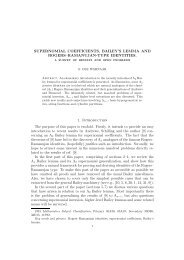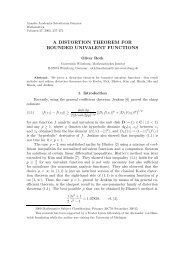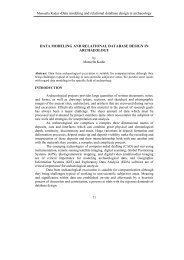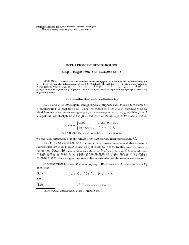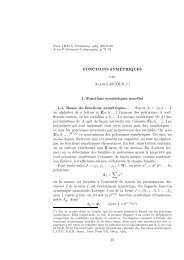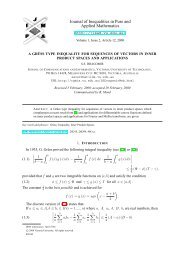CHAPTER 6 TWO-COLORED WALLPAPER PATTERNS 6.0 ...
CHAPTER 6 TWO-COLORED WALLPAPER PATTERNS 6.0 ...
CHAPTER 6 TWO-COLORED WALLPAPER PATTERNS 6.0 ...
You also want an ePaper? Increase the reach of your titles
YUMPU automatically turns print PDFs into web optimized ePapers that Google loves.
The visual difference between the ‘two kinds’ of glide reflection<br />
axes is much more clear than the one in the example discussed in<br />
6.2.1, so it is even less surprising that one kind of axes preserve<br />
colors while the other kind reverse colors.<br />
6.2.3 Hunting for the third type. As we have seen in 5.2.1 and<br />
5.5.1, it is possible to have both kinds of vertical reflection axes<br />
or half turn centers reverse colors in a two-colored border pattern.<br />
Therefore it is very reasonable to expect to have patterns in the pg<br />
family where all glide reflection axes reverse colors. Could a<br />
coloring of the familiar p4g pattern of figure 4.57 produce such an<br />
example? Well, a closer look at the NW-SE glide reflection of the<br />
p b<br />
′ 1g pattern in figure 6.3 suggests this attempt:<br />
Fig. 6.10<br />
Indeed all NW-SE glide reflections reverse colors. But so do the<br />
NE-SW glide reflections (which were in fact inconsistent with color<br />
in figure 6.3)! Could such a pattern ever belong to the pg family? As<br />
we will point out in sections 7.2, 7.9, and 7.10, and as you may<br />
already have observed in chapter 4, whenever a pattern has<br />
reflection and/or glide reflection in two distinct directions it<br />
must also have rotation: indeed our pattern above has color-



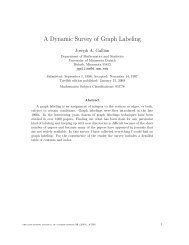


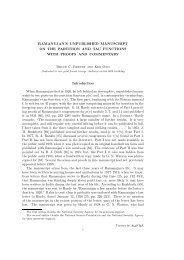
![(.,t ] and [s, .) , where [s,t ] = {s' GT; s ¤ s' ¤ t} , (.,t ] = {s' GT; s' ¤ t} and ...](https://img.yumpu.com/43303393/1/184x260/t-and-s-where-st-s-gt-s-a-s-a-t-t-s-gt-s-a-t-and-.jpg?quality=85)
